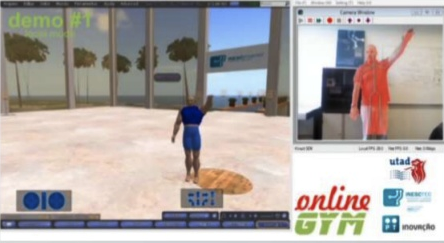Fighting crashes, fighting lag
Well, Philip at least was honest saying that both menaces — crashing and lagging — have an insane amount of sources, and they’re at least tackling a lot of them. Getting texture streaming and IM/Group Chat out of the sims should improve things dramatically — sims will still have to worry about object geometry, tracking down avatars, and parcel lists, but it’s definitely good to see textures & IM out of them. I found a sentence intriguing: “lag is also problems with many people in same area / you experience that in simulator and in client / we are attacking that”. Now I’d love to know what that means 🙂 Avatars are one of the major sources of lag, but it’s really hard to deal with that, since SL avatars are insanely detailed (think of all the attachments they have and the huge amount of memory all their scripts take to run!). So it’s anyone’s wild guess on how they plan to diminish avatar lag. I have absolutely no clue! Babbage was working on the scripting side of things, limiting the amount of memory avatars could use for their scripts, but since he left, the status of this project is unknown. And multi-prim attachments might be replaced in the future by far more manageable meshes, but Philip, later on, says that meshes are not going to happen soon. So… what’s LL’s magic to deal with avatar lag?
Shorter release cycles…?
For those of you who enjoyed the days before the Golden Age of 2006/7, SL was being developed at an insane pace. Every other week the grid would go down on Wednesday, and we got a new sim software loaded on all the servers, and a brand new (mandatory) viewer to download. Usually that meant a lot of new features (although I believe that up to 1.4 this was even more drastic) and bug fixes — and a lot of new bugs, too! Currently, LL seems to launch a new server version every other month (on average), and viewers are… unpredictably released. By contrast, third-party viewers get frequent releases, usually weekly at least, sometimes even more often. Philip wants to catch up and do that for LL’s own software as well.
There might be a problem here. Philip also says that he wants all code to be more thoroughly tested. So these two goals work against each other: shorter release cycles, but with more code testing? Currently, a feature or a bug fix takes around 6-18 months to get implemented (except for emergency measures to deal with security issues). A lot is on JIRA waiting for far longer than that — often with submitted code to fix a viewer issue. Let’s face it: LL is a very, very slow developer — because the code is insanely complex — and I personally don’t see how Philip is going to change this to keep up with his promise. Just look at the number of changes from one sim server version to the next. 1-2 months elapse, and there are at most a handful of fixes or features. And Philip assumes that these have not even been properly tested…
It’s about the economy… or not?
The next item on Philip’s agenda left me a bit confused. He started by saying that the in-world economy was indeed a priority, and what makes SL so special compared with other virtual worlds — none come even close to the US$ 0.6 billion of annual transactions! But then he also says:
The concept of the biggest economy.
The virtual economy, not that SL is only about people making money.
It’s not all about selling.
Fundamentally, SL is a system where we create virtual content and experience it together.
Success of world builders is the key driver.
it’s beyond the software and tech
We need you to build world and create content.
it’s hard to measure the success
I’m not sure how to interpret this, except perhaps that Philip just means that it’s less important to become rich in SL than to actually create compelling content. But he goes on saying that they will look closely at some metrics: “We will set up many needles around that. / To watch the success of virtual content creators.” Ok so far. A concrete measure for that: fixing Search. He goes on explaining that he’s aware that Search doesn’t work, he has increased the size of the team working on the fixes, and he’s aware that a broken Search means less sales. All this is a very good sign: he’s aligned with content creators’ needs and has been listening to the thousands of complains about the broken Search.
He also points out a lot of things related to the economy. It’s not just the Search that has to be simpler, it’s the whole shopping experience. If you find something in-world, you should be able to try it before you buy it (the mind boggles at how that is going to be implemented!). Delivery of boxes with content, which have been the only way to sell content grouped together for years (well, that and selling folders with inventory), makes things complicated for casual buyers and new users, as you have to rez the boxes first to extract the content. Somehow this is going to be fixed too. Somehow it will be related to the Marketplace (which is not going away, but it won’t replace in-world shops either). Somehow it’s all related to this economy that Philip calls “bigger than shops and XStreetSL”.
The first hour experience
Philip has not forgotten M Linden’s goal to make the first hour experience much better. However, he adds a twist: “it’s not about learning the interface / it’s about getting them to people and experiences beyond welcome / a link to Destination Guide or search on the web should be the starting point for new users”. Now we’re talking! Somehow, new users have to come in-world and immediately get immersed into places they like and talk to people with whom they will feel an immediate affinity. How exactly this will be done is anyone’s guess; I already made my own suggestions 🙂
Bye-bye, SL Enterprise?
Well, not exactly. The difference is that there will not be a special team just developing things for the enterprise market, but all efforts will be to improve the experience to all users, not just a few of them, with “special corporate projects”. I sensed here some criticism aimed to the previous CEO: resources were pooled to develop SL Enterprise, which could have been used otherwise in ways that would benefit us all.
An example that speaks to a broad point, SL Enterprise, we don’t know who is using SL.
We think it is used by educators, those casual users, by people at work.
What we do with SLE is we’re working toward focus on core user experience that affects all users.
Educators and business are affected by lag, we have to hit those first
We’re stopping work on things that don’t impact all users.
In SLE, we’re not trying to move away from use at work, but we aren’t going to work on deploy behind fire wall.
We will work to support them on the main grid.
So this is a small twist; on his latest blog, Philip promised that he would not be abandoning business and educators, like many (yours truly included!) incorrectly assumed. What they are going to do is not to differentiate between users: all projects will either benefit all types of users (residential, corporate, educational), or they won’t even be started. In practice this means that the focus is back on Second Life the virtual world, and not necessarily Second Life the nice VW platform that can be used by others for their special requirements.






